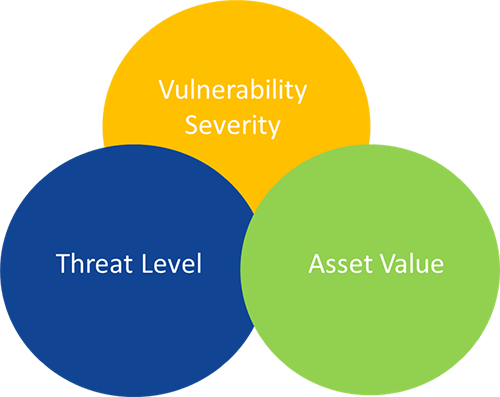7 min read
Today’s modern attack surface encompasses the network, cloud, endpoints, mobile devices, and applications and is constantly under attack from well-armed cyber criminals. Vulnerability management offers strategic insight into vulnerable applications and devices from the viewpoint of a cyber criminal, that you can plug before attackers can exploit. Vulnerability management is for service providers as well as their end-customers. Cyber criminals are actively targeting MSSPs; a more comprehensive approach to threat and vulnerability management can assist service providers in protecting the crucial supply chain.
This article will take you through a risk-based approach to vulnerability management, the benefits as an MSSP, partnership considerations, and pitfalls to avoid.
What is Vulnerability Management
A formal vulnerability management program helps your team become more proactive with cybersecurity and to speed up detection and remediation, all while staying compliant. According to the International Organization for Standardization (ISO 27002), a vulnerability is defined as, “… a weakness of any asset or group of assets that can be exploited by one or more threats.” Vulnerability management is a foundational component of compliance frameworks like PCI DSS and HIPAA. Unlike one-time scanning, vulnerability management is an ongoing approach to risk management, vulnerability assessment, and rapid response.
Vulnerability Management Pitfalls
While vulnerability scans and assessments are not new, many organizations lack the structure and scale to provide the comprehensive vulnerability management and actionable remediation that end- customers demand. Legacy vulnerability software and tools are often complex and lack important requirements like risk prioritization, customization to individual organizational risks, as well as visibility into modern configuration, cloud, and container risks and threats. Service providers and businesses alike may also lack the staff and skills to advise on best practices for managing vulnerabilities and reducing risk.
MSSP Benefits of Providing Vulnerability Management
Given that a data breach now costs over $4 million dollars, any improvement in vulnerability management effectiveness and coverage is a welcomed addition. Here are some benefits of adding managed vulnerability capabilities to your MSSP portfolio:
Reinforces your trusted advisor role: Risk-based vulnerability management positions you with end-customer executive decision makers. Vulnerability management isn’t about scanning, but rather, improving your cybersecurity maturity over time.
Increase revenue: Offering another in-demand service creates an attractive up-sell opportunity. If you aren’t offering vulnerability management services today, chances are your end-customers are purchasing them from another third-party vendor, minimizing your ability to land-and-expand incremental revenue.
Strengthens end-client retention: Boost customer loyalty and engagement by augmenting IT tasks that offload time-consuming tasks, allowing your end-clients to focus on other programs and technologies.
Prioritization is Key
There will inevitably be more vulnerabilities identified than can be immediately addressed, so a successful vulnerability management program reduces the false positives and “noise”. Tailor your vulnerability management offering to end-customer risks, corporate goals, IT staff and expertise, and cybersecurity maturity. Look beyond routine CVSS (Common Vulnerability Scoring System) outcomes to identify vulnerabilities, misconfigurations, and risky software to focus on what’s most urgent. Continue to work with end-customers to maintain that visibility and configuration control over time by reducing drift.
Prioritize vulnerabilities with the greatest impact to your end-customers by evaluating asset value, the severity of vulnerability gaps, and the level of threat it poses to each unique organization. Rank detected vulnerabilities from highest to lowest severity to pinpoint areas with the greatest cybersecurity impact. This prioritization improves your analyst efficiency and effectiveness.

As you evaluate vulnerability management programs, be aware that vulnerability management is not a “one-size-fits-all” approach, but rather should be customized to your business and associated risk profile.
Partner Considerations for Vulnerability Management
You may already be using vulnerability scanning software and tools, but have found that they are time-consuming, often don’t cover today’s diverse assets, and produce a deluge of raw data that is not always actionable. Overcome the disadvantages of legacy vulnerability management tools and software that can’t keep up with modern threats and well-funded cyber criminals. Look for a vulnerability management solution that provides:
- Visibility Across the Entire Attack Surface
Overcome blind spots that can hamper protection for you and your customer with real-time SOC monitoring across all points in the expanding attack surface. - Flexibility of Deployment
Look for a solution with a variety of deployment models, comprehensive scans and assessments, and agent and agent-less scanning to address a wide range of customer use cases and compliance requirements. - Timeliness and Rapid Results
Enables end-users to act immediately based on comprehensive remediation recommendations and avoids bulky processes and reports that get in the way.
The Good News
Service providers can leverage vulnerability management to significantly improve an organization’s defenses against breaches and crippling ransomware. Instead of relying on complex software or tools that don’t scale, a managed program for vulnerabilities establishes you as a trusted advisor that scales up as your efforts grow over time. The addition of vulnerability management as a service is straightforward, well understood by Small-to-Mid-sized Businesses (SMBs) and does not require costly hardware and software. MSSPs are well positioned to take the vulnerability management recommendations and work with end-customers on remediation steps and plans.
The Bottom Line
Attack surface protection is crucial as networks expand along with risks from remote employees and connections from third-party supply chain partners. Vulnerability Management helps reduce dwell time, the time that hackers are in an environment performing reconnaissance or even removing sensitive data. Move beyond traditional scanning to continuous visibility and actionable remediation as your end-customers evolve their security maturity. Protect customer infrastructure and assets while reducing the level and magnitude of threats. When offered as a managed service, risks are eliminated, hacker dwell time is cut short, and data breaches are avoided. Learn more about Netsurion’s comprehensive vulnerability management program that enhances visibility and prioritization with a managed service that augments your staff and skills.

Paula Rhea
Paula Rhea, CISSP is a product marketing manager at Netsurion. She is responsible for developing go-to-market strategies for customers and partners regarding managed threat protection and secure edge networking. Paula has extensive cybersecurity experience in managed services, compliance, and endpoint protection.

